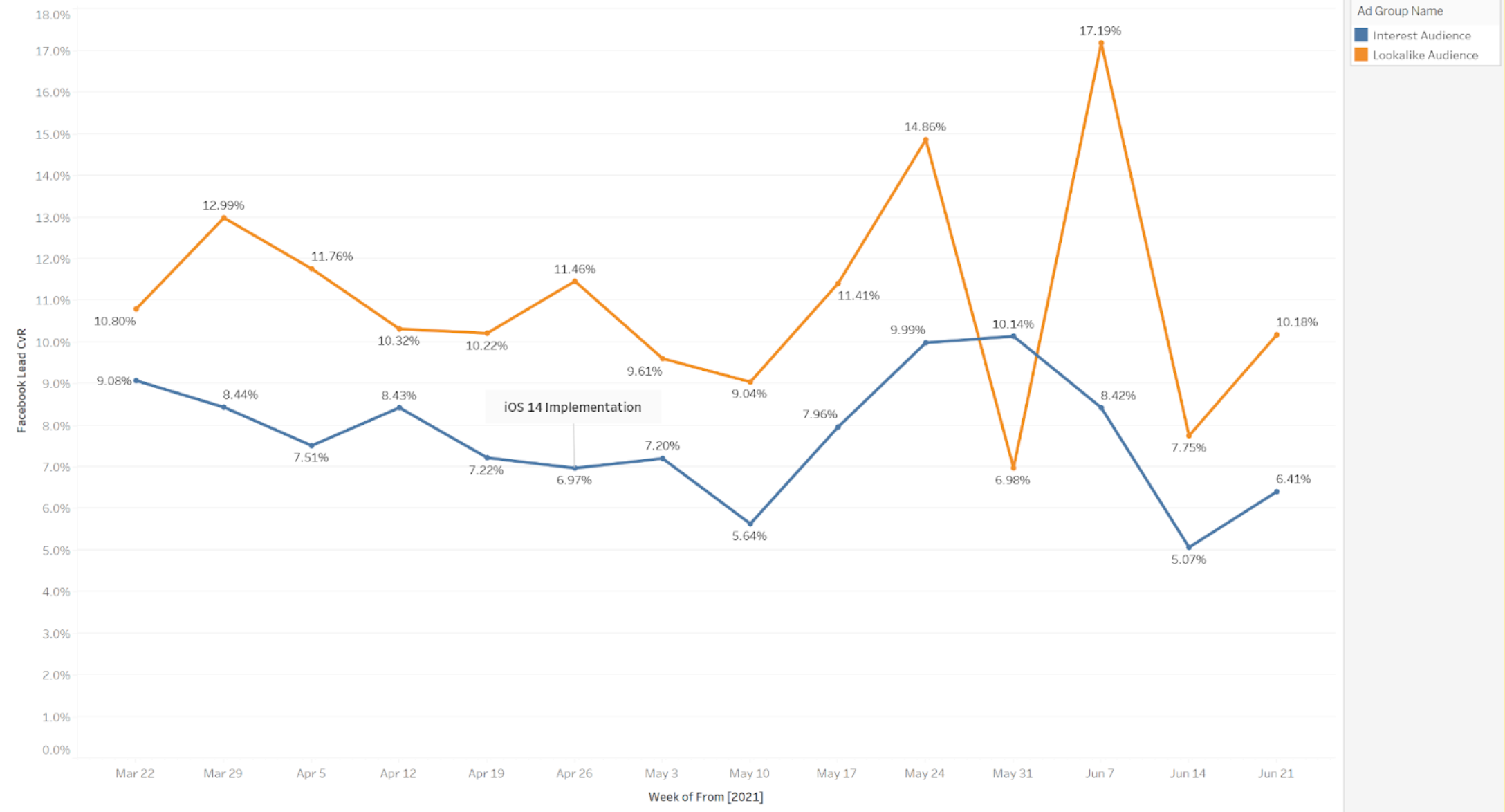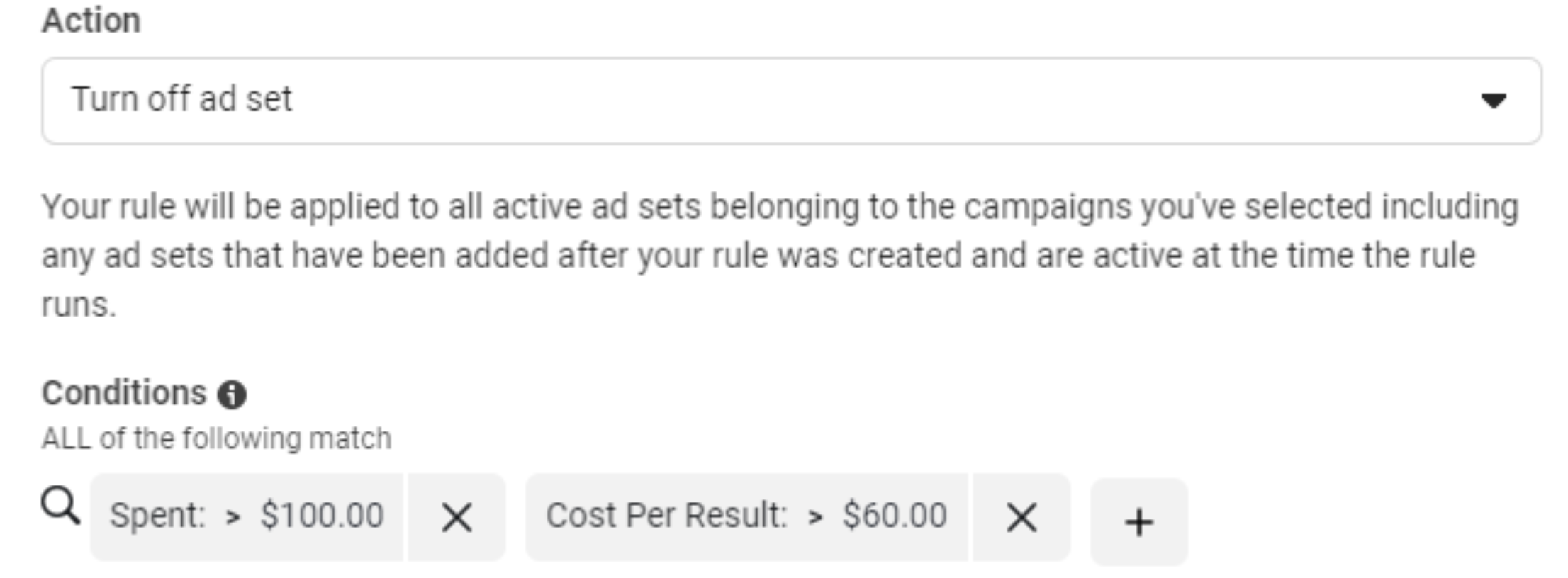The new pro-consumer privacy measures Apple implemented with the launch of iOS 14 brought major changes to the digital marketing world.
The Facebook iOS 14 update also shook up the paid social realm.
And since the announcement, no company has been more vocal about the potential implications to its platform than Facebook.
In fact, for many, it wasn’t a big leap to think the update was the beginning of the end of the world – tracking-wise.
But after months of preparing clients with training, documentation, decks, POVs, and webinars, the moment came.
April 26th was D-Day. Facebook’s new policies to mitigate tracking loss became mandatory. And, so it began.
In this column, you’ll learn about these challenges and what you can do about each one:
- Pixel-Based Conversion Reporting Is Off… Way Off
- Conversion Rates Are Inconsistent
- Campaign Budget Optimization Is Less Reliable
- Retargeting Audiences Are Smaller: No Surprise There
First, let’s take a look at what advertisers are experiencing as a result of Facebook’s iOS 14 update.
Opting In vs. Opting Out
The main issue surrounding iOS 14 was the use of Apple’s Identifier for Advertisers (IDFA), Apple’s cookie that allows tracking on iOS devices.
Until implementation, Apple device owners were automatically opted-in for tracking but had the option to opt-out.
Now, following the update to iOS 14.5, iOS users are prompted and asked if they would like to be opted into being tracked, with the default now being opt-out.
According to mobile analytics company Flurry, when iOS 14.5 prompts began, an estimated 2% of users opted-in to tracking. That number has steadily increased since the end of April but even now only sits at an estimated 10%.
How the Facebook iOS 14 Update Impacts Marketers
Depending on your perspective, iOS 14 is a win for consumer privacy. But there’s no question it’s a big, fat loss for digital marketers.
Facebook, in particular, is a mobile-centric advertising platform. Now that they’ve lost the ability to track a large segment of their mobile traffic reliably, there will be implications.
To mitigate the impact iOS 14 has on tracking, Facebook implemented new measures. The latest updates resulted in unpleasant limitations for advertisers on the platform, including:
- Delayed reporting for pixel-based conversions.
- Conversion modeling/estimated results.
- Shorter attribution windows.
- Conversion prioritization (aggregated event measurement).
- Smaller retargeting audiences.
- Fewer data breakdown options.
What We’ve Seen So Far
Now that we’ve been living in this brave new era of reduced mobile tracking ability on Facebook for the past few weeks, let’s take a moment to examine the impact.
Was this truly the apocalyptic event many had feared? Or was it something more akin to a Y2K-level false alarm?
The answer is, as is generally the case, somewhere in the middle. There have been some appreciable impacts on campaigns, especially if your campaigns heavily depend on pixel-based conversions.
But has iOS 14 made Facebook a less viable channel for demand generation marketing?
Hardly.
Nevertheless, here are a few common threads across the campaigns I help manage on the agency side and, perhaps more importantly, steps you can take to minimize their impact.
1. Pixel-Based Conversion Reporting Is Off… Way Off
Between fewer tracked mobile conversions, delays in reporting, and a healthy dose of “statistical modeling” on behalf of Facebook, it’s no surprise the numbers you may be seeing in Ads Manager aren’t necessarily reflective of reality.
Take one of our clients, for example: A B2B tech company driving leads using a landing page on their website.
With view-through attribution and a few dropped UTMs, before iOS 14 was implemented, reported Salesforce leads were generally around 10-12% less than the reported Facebook leads.
After iOS 14 was implemented at the end of April, the pendulum swung in the opposite direction, and Facebook began drastically under-reporting the number of leads.
Though the ratio variance is inconsistent, it seems to be growing.
![]()
What You Can Do:
- Implement Conversions API and optimize campaigns to back-end events.
- Use On-Facebook lead generation tactics such as forms or messenger for more reliable results.
2. Conversion Rates Are Inconsistent
Perhaps one of the biggest and most frustrating impacts we’re noticing post-implementation is the lackluster performance of evergreen campaigns. Sure, a degree of performance falloff is expected as complex algorithms adjust to the new tracking realities.
But after a few weeks of rising CPLs and more data becoming available, we started to see some root causes emerge – unpredictable conversion rates.
The client above began experiencing erratic Facebook click-to-lead conversion rates for their primary interest and lookalike-based audiences shortly after implementing iOS 14.
What used to be relatively minor week-to-week changes gave way to significant swings.
With unpredictable lead conversion rates, CPLs were equally volatile as Facebook struggled to optimize ad sets driving the best results.

The same was observed across most advertisers using pixel-based conversions to varying degrees of severity.
What You Can Do:
- Diversify targeting: Aggressively test a broad range of interest-based, lookalike, and third-party audiences.
- Keep a close eye on interest-based audiences, as those appear to have the most fluctuation.
3. Campaign Budget Optimization Is Less Reliable
CBO, or Campaign Budget Optimization, is a tool that allows Facebook to allocate budget among ad sets based on performance dynamically. The better-performing audiences based on your objective tend to get a larger share of your daily budget.
Budgets are set at the campaign level instead of the ad set level.
This once-powerful tool for maximizing efficient distribution of spend is showing its vulnerability in light of the recent tracking changes.
Several client campaigns with CBO enabled showed Facebook allocating a disproportionate amount of spend towards interest-based audiences with much higher CPLs, even when similarly-sized audiences with lower CPLs were available.
This is a curious case, prompting more manual intervention and allocation of spend across various audience segments.
What You Can Do:
Consider the use of automated rules as a “backstop” to prevent Facebook from overspending on poor-performing ad sets.
- With campaigns with CBO enabled and multiple audiences, set a CPL threshold that’s slightly higher than your goal.
- Then, set a daily spend amount you’re comfortable spending on a given audience.
- Set the rule to pause an audience if it has spent that amount and driven CPLs higher than your threshold.
- Don’t forget to set a rule to unpause all ad sets at the beginning of a new day.

4. Retargeting Audiences Are Smaller: No Surprise There
The last impact is merely a confirmation of what we all knew was going to happen. Pixel-based retargeting audiences are smaller and harder to reach.
Since we just lost tracking on a large percentage of mobile traffic, retargeting based on user-visited websites will become a less viable tactic as people age out of the website custom audiences they’re currently in.
Any website custom audiences created during or after the iOS 14 implementation and where that period of time is within the look-back window has undoubtedly seen a reduction in the number of targetable people within those audiences.
What You Can Do:
Leverage alternative retargeting data sources, such as:
- First-party data (Custom audiences based on emails/phone numbers, etc.).
- Engagement-based retargeting (People who have interacted with your ads, etc.).
- Video-based retargeting (People who have watched a certain percentage of your pages video ad content).

Facebook iOS 14 Update: The Aftermath
When it comes to iOS 14 and Facebook, it’s safe to say the worst of the storm is over. Marketers also know much more about what to expect as the cookieless future becomes more real.
Tactics evolve, as they always do. And marketers will adapt to the changing landscape.
The Facebook iOS 14 update is the cautionary dress rehearsal for the impending elimination of third-party cookies from browsers like Chrome. At least, we’ll have until 2023 to get ready for that one.
More Resources:
- How Do Facebook Ads Actually Work? Here’s What You Need to Know
- How to Build the Perfect Facebook Ad Audience
- How to Advertise on Facebook: A Beginner’s Guide
Image Credits
Featured image: PanyaStudio/Shutterstock.com
Screenshots taken by author, July 2021


